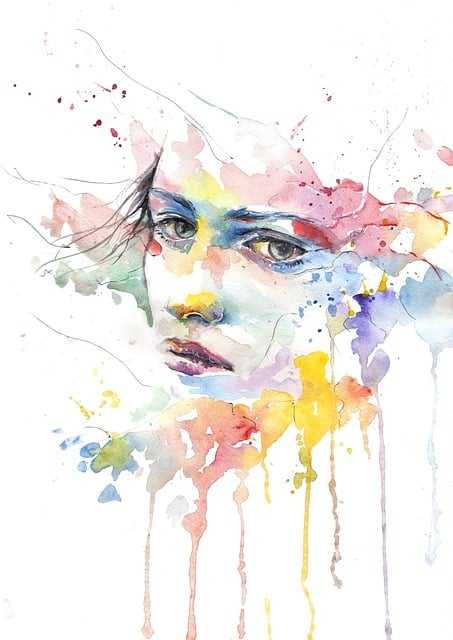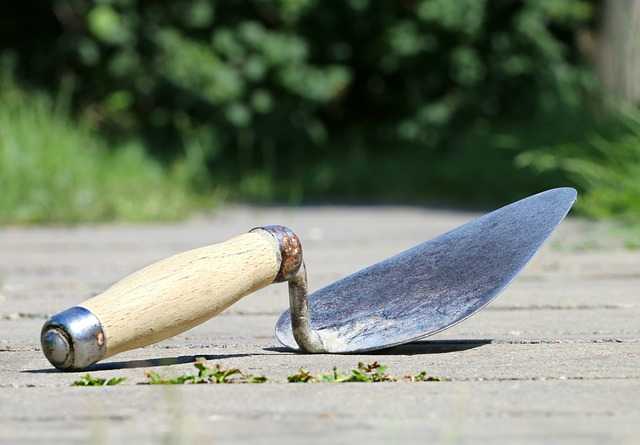Table of Contents
- Understanding the Fundamentals of Watercolor Techniques for Beginners
- Choosing the Right Watercolor Supplies to Enhance Your Artistry
- Exploring Color Theory and Mixing Techniques in Watercolor Painting
- Mastering Composition and Perspective in Your Watercolor Creations
- Q&A
- The Way Forward
Understanding the Fundamentals of Watercolor Techniques for Beginners
Watercolor painting is a fascinating medium that can bring a unique vibrancy and fluidity to your artwork. At its core, it involves the use of pigments suspended in a water-based solution, allowing for a depth of color that can vary greatly depending on your application methods. Understanding the basics is crucial, especially for beginners looking to explore this versatile form of art.
One of the essential techniques is wet-on-wet, where you apply wet paint onto a wet surface, allowing colors to merge and create beautiful blends and gradients. This technique is ideal for backgrounds or atmospheric effects, as the paint flows effortlessly, offering an ethereal quality to your artwork. On the other hand, the wet-on-dry technique involves applying wet paint onto a dry surface, resulting in sharper edges and more defined shapes, perfect for detailed work.
Additionally, mastering brush control is vital. Different brushes can produce various effects, and each shape allows for unique strokes:
- Round Brushes: Great for detail and versatile strokes.
- Flat Brushes: Perfect for broad washes and sharp edges.
- Fan Brushes: Excellent for creating texture, like foliage.
Furthermore, color mixing is fundamental in watercolor painting. Unlike other mediums, you can achieve stunning hues by layering transparent colors rather than mixing them directly. This technique enhances the vibrancy of your artwork. Here’s a quick reference table for primary color mixing:
| Primary Color 1 | Primary Color 2 | Resulting Color |
|---|---|---|
| Red | Blue | Purple |
| Blue | Yellow | Green |
| Red | Yellow | Orange |
By exploring these fundamental techniques—wet-on-wet and wet-on-dry, brush control, and color mixing—you’ll build the foundation necessary to create stunning watercolor pieces. Embrace the learning process, and remember that practice is key to mastering the art of watercolor painting.


Choosing the Right Watercolor Supplies to Enhance Your Artistry
When it comes to watercolor painting, the right supplies make all the difference in achieving stunning results. Quality paints, for instance, are essential for vibrant colors and smooth application. Look for brands that offer a range of pigments with high saturation and transparency. Two types of watercolor paints dominate the market: tube and pan. Tubes are perfect for artists who prefer to work in larger areas, while pans are handy for portability and quick sketches on the go.
Equally important are your brushes, which come in various shapes and sizes. A versatile set typically includes:
- Round brushes for detail work
- Flat brushes for washes and broad strokes
- Filbert brushes for blending
Consider investing in synthetic or natural bristle brushes based on your skill level and preferences. While synthetic brushes are often more affordable and durable, natural hairs can provide a softer touch and absorption for a fluid application.
Another key component is the paper you choose. Watercolor paper is designed to handle water without buckling, and it comes in various weights and textures. Heavyweight papers (300 gsm or more) are ideal for techniques that require a lot of water, while lighter papers (200 gsm) can be used for less intense washes. Look out for these types:
- Rough: for textured effects
- Cold-pressed (NOT): for versatile use
- Hot-pressed (smooth): for fine detail work
Lastly, don’t overlook accessory tools that can elevate your watercolor experience. Items such as masking fluid, watercolor pencils, and sponges offer flexibility and creative options in your artwork. Also, organizing your supplies in a way that inspires creativity can enhance your artistic process. Consider using a dedicated palette that allows for mixing and storing excess paint or a travel case that keeps your materials neatly arranged when painting on location.


Exploring Color Theory and Mixing Techniques in Watercolor Painting
Color theory forms the backbone of any successful watercolor artist’s palette. Understanding how colors interact can dramatically enhance your work, enabling you to create vivid, harmonious paintings or striking contrasts that evoke emotion. Primary colors—red, blue, and yellow—are the foundation upon which all other hues are built. By exploring their relationships, artists can form a deeper understanding of color mixing. For instance, combining two primary colors yields secondary colors: green (blue + yellow), violet (red + blue), and orange (red + yellow).
Watercolor paints are unique in their ability to layer and blend, resulting in a mesmerizing array of colors that can vary dramatically depending on the application method. Mixing techniques, such as wet-on-wet or wet-on-dry, allow for different visual effects. In the wet-on-wet technique, colors blend seamlessly, creating soft edges and gradients, while wet-on-dry results in sharper lines and a more defined look. Experimenting with these methods can lead to stunning results:
- Gentle washes using wet-on-wet create ethereal backgrounds.
- Bold, detailed work using wet-on-dry adds dimensions.
- Color glazing techniques can enhance depth and richness.
To truly master watercolor, artists should also pay attention to the color wheel. The complementary colors, situated directly opposite each other on the wheel, can provide striking contrasts when placed side by side. Here’s a helpful layout of some complementary pairs:
| Color | Complementary Color |
|---|---|
| Red | Green |
| Blue | Orange |
| Yellow | Violet |
By experimenting with these combinations and techniques, you can discover the limitless possibilities of watercolor painting. The key is to allow your intuition and creativity to guide you. With practice, the deliberate choices you make regarding color and technique will not only enhance your art but also offer a deeper, more personal expression in every piece you create.


Mastering Composition and Perspective in Your Watercolor Creations
When embarking on your watercolor journey, understanding composition is essential to create visually appealing artwork. Composition refers to the arrangement of elements within your painting, and it can significantly influence the viewer’s experience. Start by considering the Rule of Thirds; imagine your canvas divided into nine equal parts by two vertical and two horizontal lines. Position your main subject along these lines or at their intersections to create a balanced yet dynamic layout. This technique frequently draws the eye and encourages exploration of the entire painting.
A well-planned composition should also include a variety of shapes and sizes. By incorporating focal points—areas that command attention—you guide the viewer’s gaze. To maintain interest, utilize a mix of large and small elements throughout your piece. This contrast not only enhances visual appeal but also adds depth and perspective, creating a sense of three-dimensionality within your two-dimensional medium.
Perspective plays a pivotal role in conveying depth in your watercolor artwork. To achieve the desired effect, consider employing linear perspective, which uses a horizon line and vanishing points to create the illusion of space. Experiment with the placement of these elements in your scene to lead the viewer’s eye toward the focal point. Additionally, atmospheric or aerial perspective can be used to soften colors and details in the background, enhancing the sense of distance and depth within your artwork.
don’t hesitate to break conventional rules to find your unique voice. Composition and perspective can serve as guidelines rather than strict regulations; feel free to innovate and experiment. Techniques like cropping and asymmetrical balance can immerse your audience, creating a powerful emotional response. Through practice and exploration, you will develop your individual style, allowing your watercolor masterpieces to resonate with viewers on a more personal level.
Q&A
Q&A About Art Watercolors
Q1: What are watercolors, and how do they differ from other paint types? A1: Watercolors are a type of paint that uses water as a solvent. Unlike oil paints, which require solvents like turpentine and drying oils, watercolors blend effortlessly and can be reactivated with water even after they’ve dried. This unique property allows artists to create beautiful washes and delicate layers, adding a sense of fluidity and transparency to their work.Q2: What materials do I need to get started with watercolor painting? A2: To dive into watercolor painting, you’ll need a few essential supplies. First, gather watercolor paints, which come in tubes or pans. Next, invest in quality watercolor paper that can handle water without buckling. A set of brushes designed for watercolor, typically made with soft bristles, will help you achieve varying strokes. don’t forget a palette for mixing colors and a jar of clean water for rinsing brushes.
Q3: Are there any specific techniques I should learn as a beginner? A3: Absolutely! As a beginner, focusing on a few fundamental techniques can greatly enhance your skills. Start with “wet-on-wet” for soft color blends, “wet-on-dry” for sharper edges, and “dry brush” for texture. Experimenting with layering, glazing, and washes will help you develop a better understanding of how watercolors interact with each other and the paper.
Q4: How can I achieve vibrant colors with watercolors? A4: To achieve vibrant colors, begin with high-quality pigments, as they contain more color saturation. Use less water for more intensity, and build layers gradually to deepen the hues. Additionally, while mixing colors, remember that complementary colors can tone down vibrancy, while analogous colors typically enhance richness.
Q5: What common mistakes should I avoid when painting with watercolors? A5: Some common pitfalls include using too much water or too little paint, which can lead to a washed-out appearance. Another mistake is rushing the drying process; allowing layers to dry fully before adding more can prevent unwanted mixing. avoid scrubbing into the paper aggressively, as watercolor paper is delicate and can easily be damaged.
Q6: Can watercolors be used for more than just traditional painting? A6: Definitely! Watercolors are incredibly versatile. They can be used for illustration, hand-lettering, and even in mixed media projects. Artists often incorporate watercolors in sketches, journals, and crafts like card making. Their fluid nature allows for experimentation across various styles and mediums, making them a favorite among both beginners and professionals.
Q7: How can I improve my watercolor painting skills over time? A7: Consistent practice is key! Set aside regular time for painting and try different subjects and styles to challenge yourself. Watching tutorials, joining workshops, and engaging with watercolor communities can provide valuable insights and inspiration. Keep a sketchbook for experimentation and studies; it’s a great way to see your progress over time.
Q8: What are some famous watercolor artists I should look up for inspiration? A8: You can find inspiration from a variety of renowned watercolor artists. J.M.W. Turner, known for his atmospheric landscapes, and Winslow Homer, celebrated for his dynamic compositions, are classic artists worth studying. Contemporary names like Beatrice Coron, who merges watercolor with cut-paper techniques, also bring a fresh perspective to the medium.
By exploring these questions and answers, you can gain a deeper understanding of the world of watercolors and ignite your creative journey in this magnificent art form!
